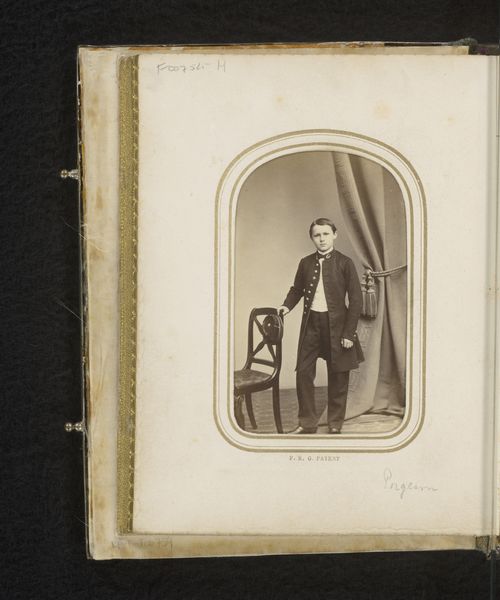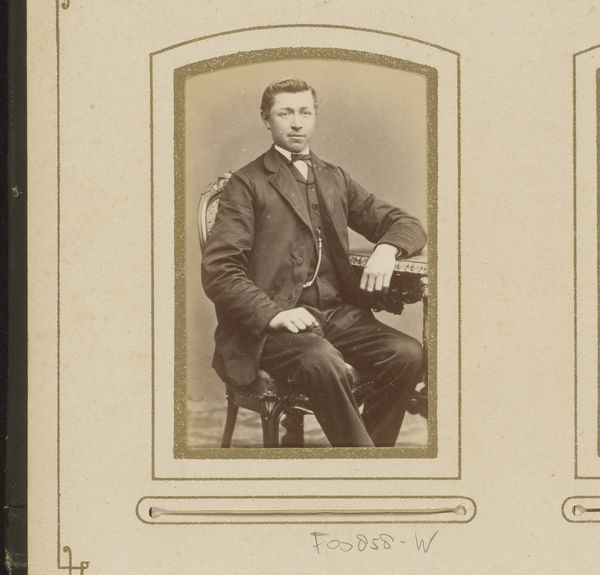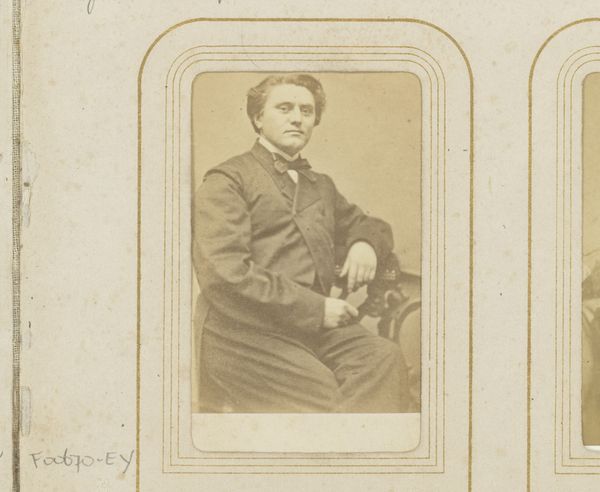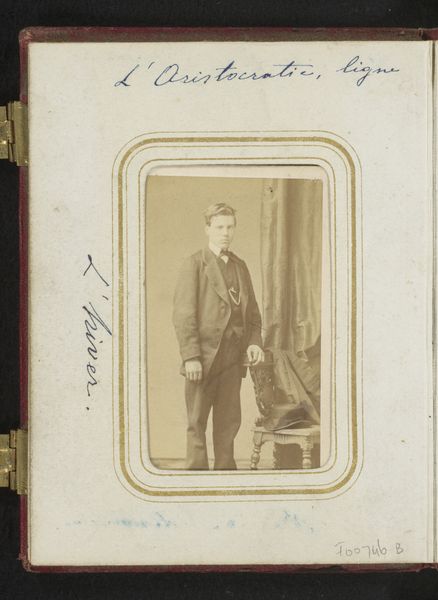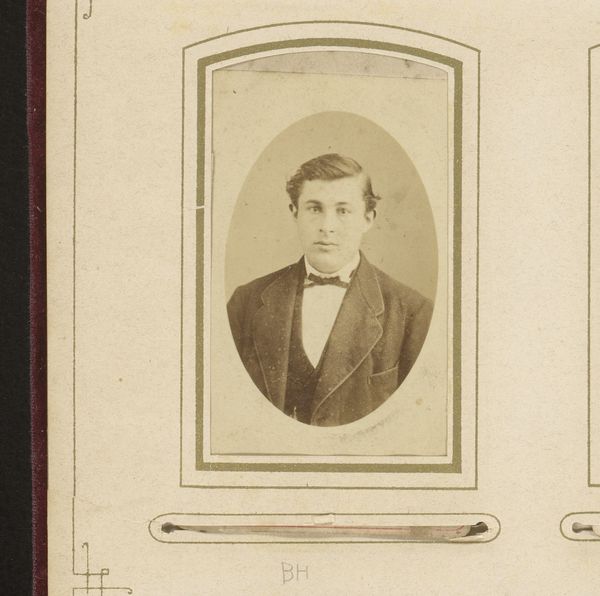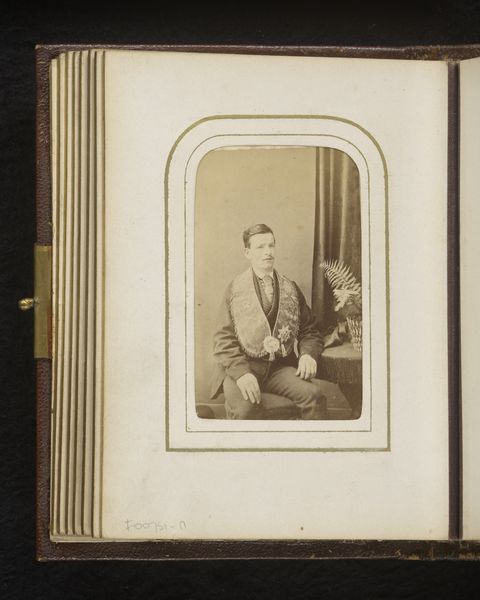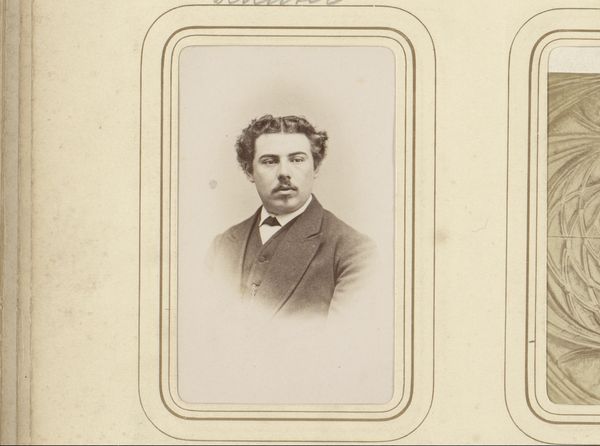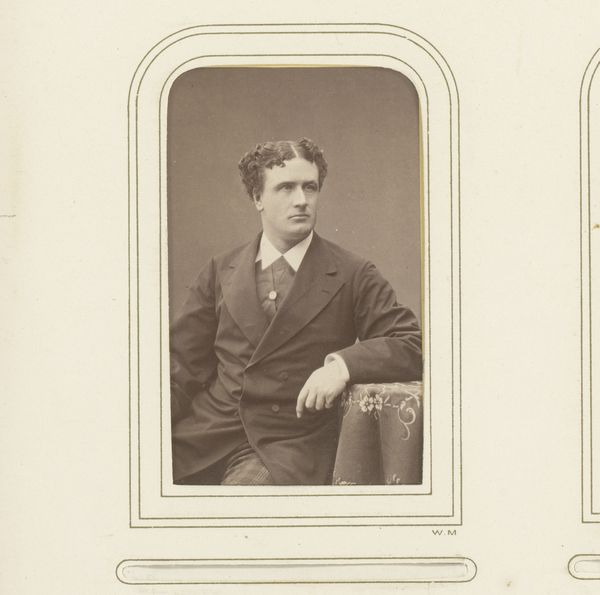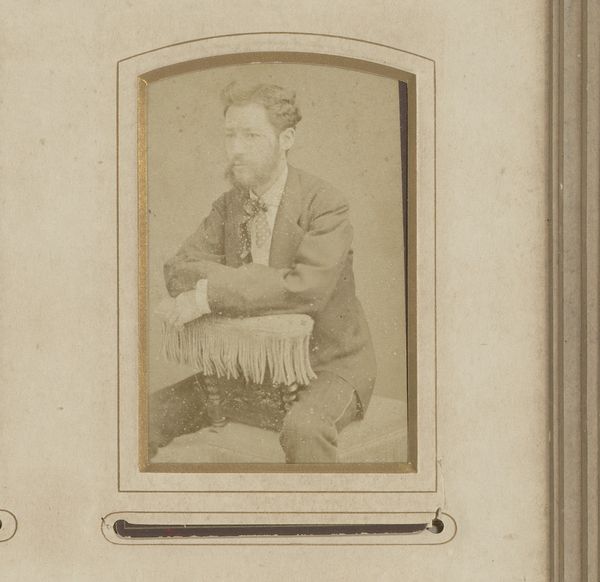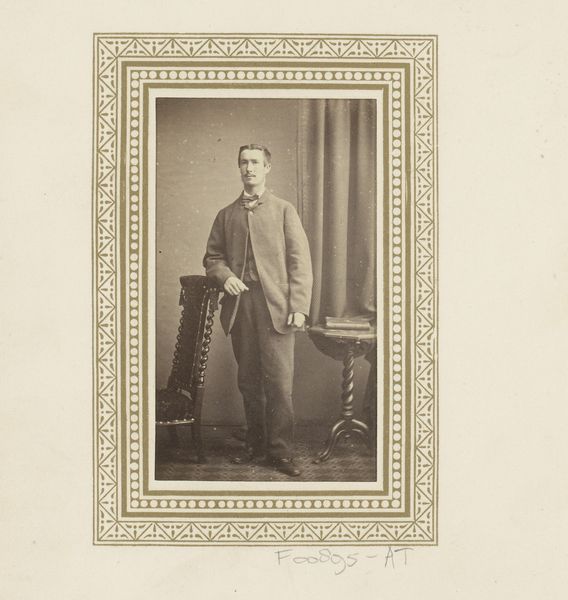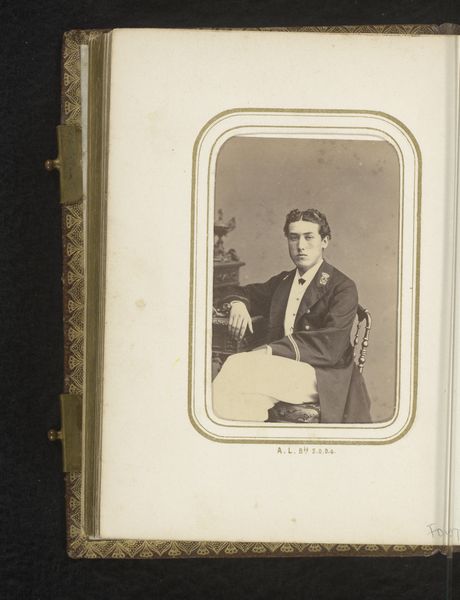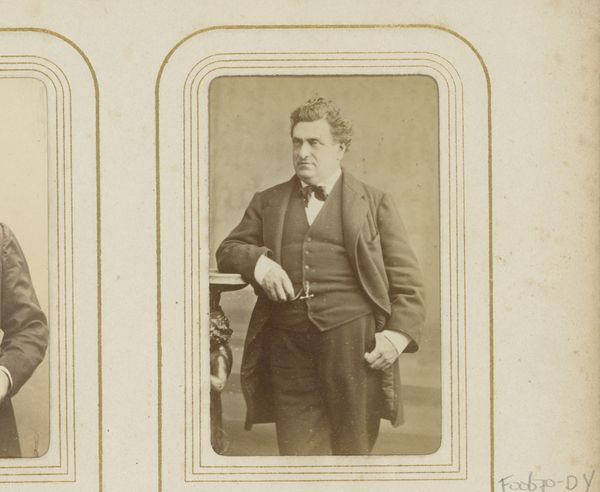
Dimensions: height 84 mm, width 51 mm
Copyright: Rijks Museum: Open Domain
This is a photographic portrait of a man, created by Albert Greiner. In the 19th century, photography was a relatively new process. The image would have begun as a light-sensitive emulsion on a glass plate, carefully prepared and exposed in a camera. The sepia tones and soft focus of the print reflect both the technical limitations and aesthetic conventions of the time. But beyond the artistry of composition, consider the economic implications. Photography democratized portraiture, making it accessible to a wider segment of society. This wasn't just about capturing likeness; it reflected a shift in social status and the growing middle class, who could now afford to document their existence. The rise of photography studios also created new forms of labor, from the photographers themselves to the technicians and assistants who developed and printed the images. So, what appears to be a simple portrait is actually a complex product of technological innovation and social change.
Comments
No comments
Be the first to comment and join the conversation on the ultimate creative platform.
